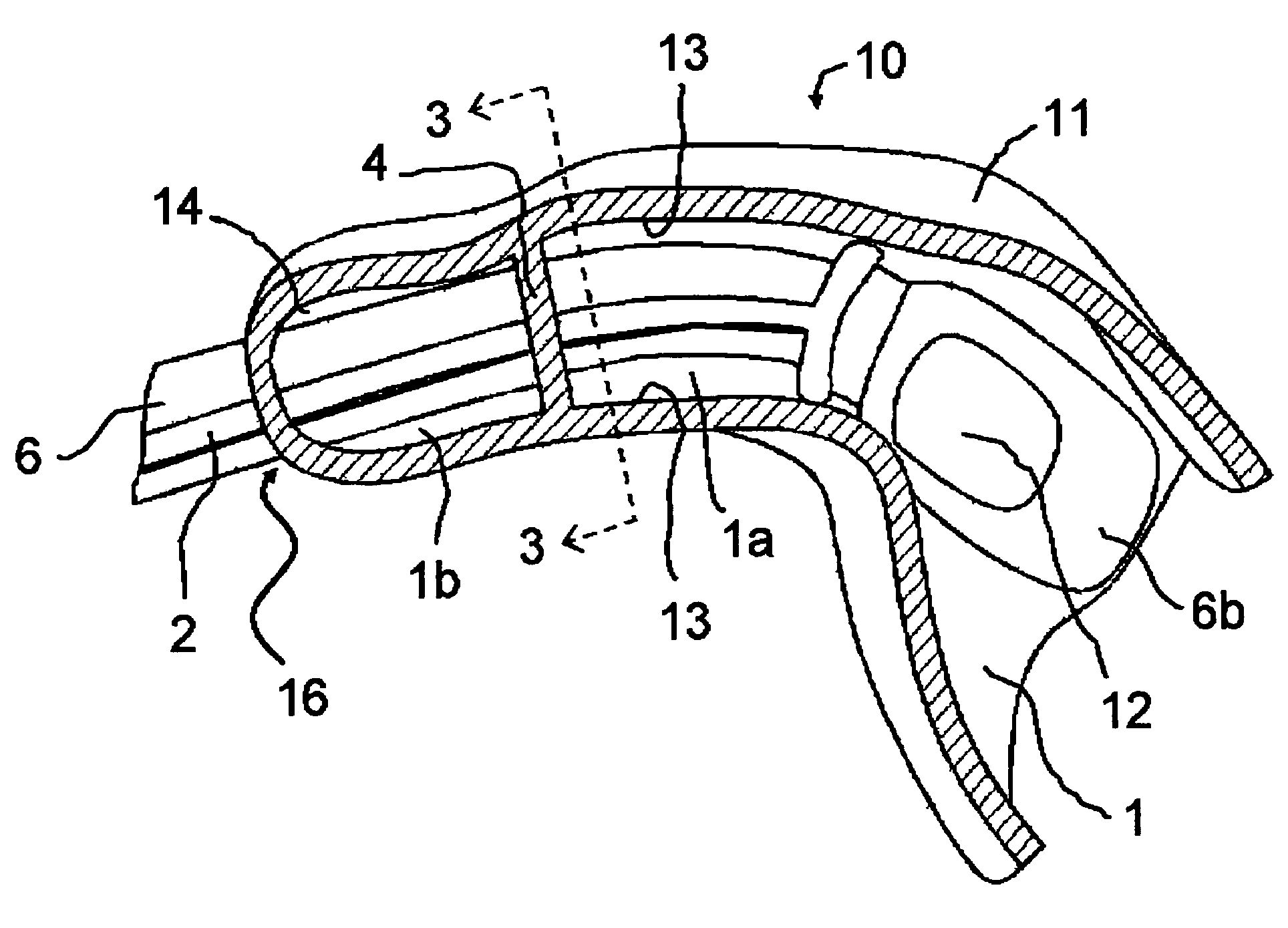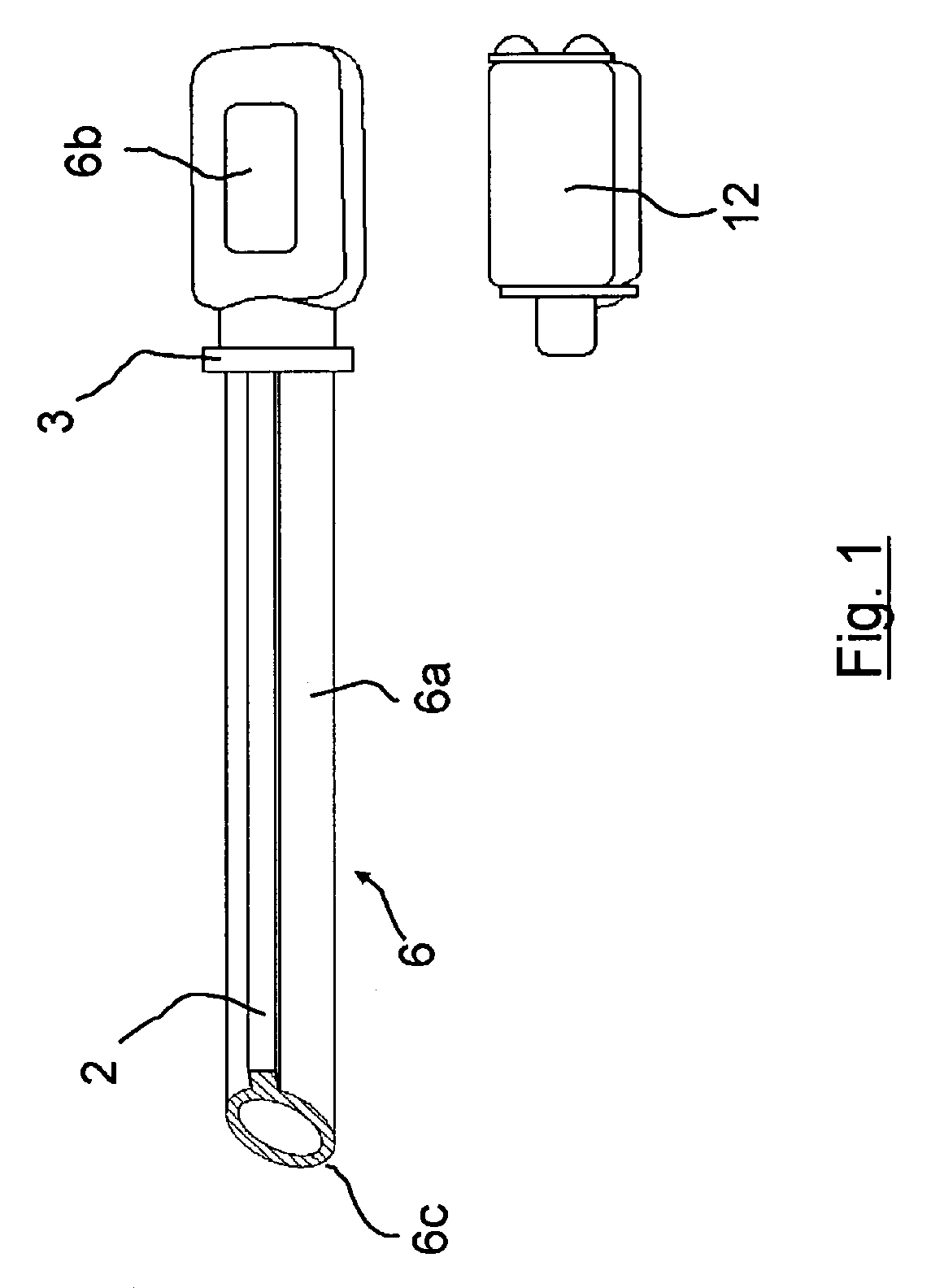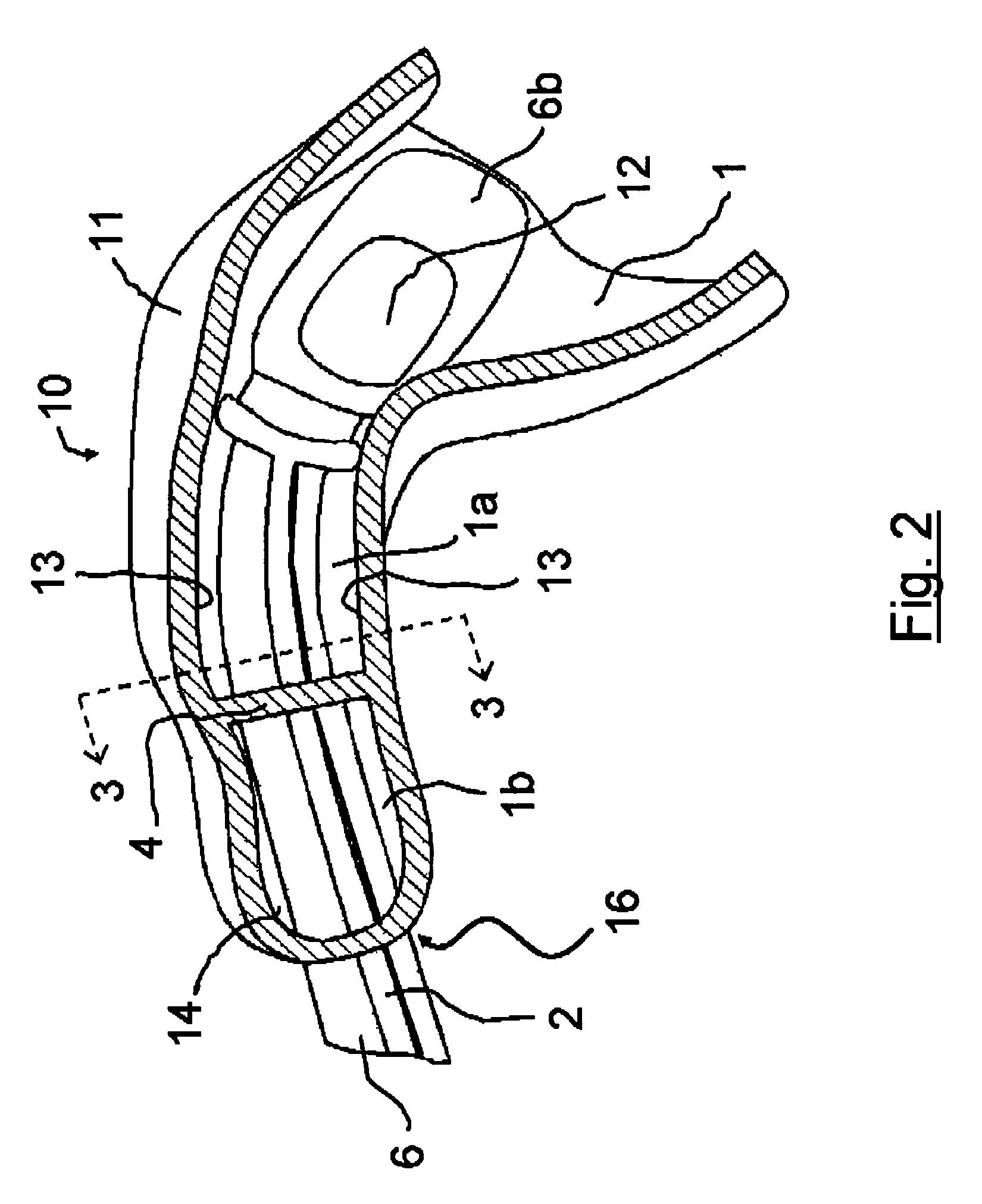Hearing instrument receiver mounting arrangement for a hearing instrument housing
a technology for hearing instruments and receivers, applied in the field of hearing instruments, can solve the problems of inability to provide consistent feedback performance, inability to guarantee the performance of the hearing instrument, and inability to meet the needs of the user,
- Summary
- Abstract
- Description
- Claims
- Application Information
AI Technical Summary
Benefits of technology
Problems solved by technology
Method used
Image
Examples
Embodiment Construction
[0015]Referring now to FIG. 1, an electronic assembly tube 6 comprises a substantially tubular pathway 6a and an assembly receptacle 6b. In a currently preferred embodiment, the assembly receptacle 6b is in fluid communication with the tubular pathway 6a. The assembly receptacle 6b is sized to receive the electronic assembly 12.
[0016]Electronic assembly 12 comprises components which process received sound to provide processed sound for output into an ear canal of a hearing instrument user, e.g. a receiver. In a preferred embodiment, electronic assembly 12 is an electromechanical receiver as will be familiar to those of ordinary skill in the hearing instrument arts. In alternative embodiments, electronic assembly 12 may further comprise additional electronic components such as filters; active devices, and the like. The tubular pathway 6a carries the processed sound from the electronic assembly 12 to the outside 16 of the housing 11.
[0017]A barrier stopper 3 is located at a predetermi...
PUM
 Login to View More
Login to View More Abstract
Description
Claims
Application Information
 Login to View More
Login to View More - R&D
- Intellectual Property
- Life Sciences
- Materials
- Tech Scout
- Unparalleled Data Quality
- Higher Quality Content
- 60% Fewer Hallucinations
Browse by: Latest US Patents, China's latest patents, Technical Efficacy Thesaurus, Application Domain, Technology Topic, Popular Technical Reports.
© 2025 PatSnap. All rights reserved.Legal|Privacy policy|Modern Slavery Act Transparency Statement|Sitemap|About US| Contact US: help@patsnap.com



